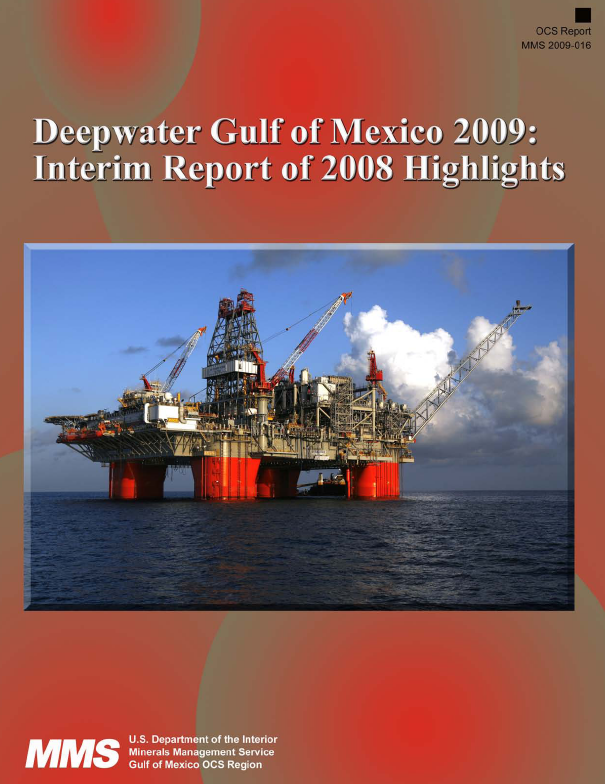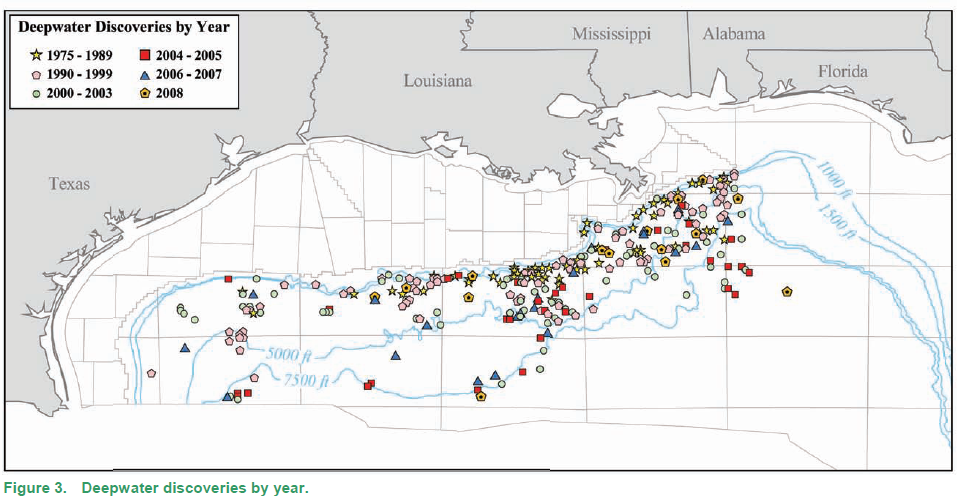 Minerals Management Service
Minerals Management Service
- 87 pages
- May 2009
This is the ninth publication that the Minerals Management Service has released chronicling deepwater exploration, development, and production activities in the Gulf of Mexico. For this report, deep water is considered to be water depths of 1,000 feet (305 meters) or greater. Leasing activity in the deepwater Gulf remains strong. Central Sale 206, held on March 19, 2008, attracted approximately $3.7 billion in high bids—the most since Federal offshore leasing began in 1954. The Minerals Management Service received 1,057 bids from 85 companies on 615 blocks, of which 603 were ultimately awarded. Sixty-nine percent of all blocks receiving bids were in 1,000 feet (305 meters) of water or greater. Occurring on the same day as Sale 206, Eastern Sale 224 garnered over $65 million in high bids, attracting 58 bids from six companies on 36 blocks, of which all were ultimately awarded. All acreage offered was in water depths greater than 2,625 feet (800 meters). Western Sale 207, held on August 20, 2008, attracted approximately $487 million in high bids. The Minerals Management Service received 423 bids from 53 companies on 319 blocks, of which 313 were ultimately awarded. Seventy-eight percent of all blocks receiving bids were in 1,000 feet (305 meters) of water or greater. Central Sale 208, held on March 18, 2009, attracted approximately $703 million in high bids. The Minerals Management Service received 476 bids from 70 companies on 348 blocks. Seventy-two percent of all blocks receiving bids were in 1,000 feet (305 meters) of water or greater. There were 15 industry-announced discoveries in 2008, almost double the number of discoveries in 2007. Deep water has continued to be a very important part of the total Gulf production, providing approximately 70 percent of the oil and 36 percent of the gas in the region. At the end of 2008, there were 141 producing projects in the deepwater Gulf, up from 130 at the end of 2007. The 20 highest producing blocks in the Gulf continue to be located in deep water. Seven deepwater projects, including Thunder Horse, began production last year. The Thunder Horse Field is now the largest producer in the Gulf, with production of approximately 260,000 barrels of oil per day.
The first floating production, storage, and offloading facility in the U.S. Gulf, the BW Pioneer
vessel, will develop the Cascade and Chinook Fields in Walker Ridge, with first oil production
expected in 2010. This development project will utilize four technologies considered new to the
Gulf, including free-standing hybrid risers, polyester mooring, electric submersible booster
pumps, and shuttle tankers for oil export. Another first for the Gulf will be the use of a shipshape,
floating production unit, the Helix Producer I vessel, for the Phoenix development in
Green Canyon, with a planned production startup in 2010. A disconnectable transfer system
will be used to connect the subsea wells to the Helix Producer I, also a first for the U.S. Gulf.
Also scheduled to begin production in 2010 are the projects tied back to the Perdido Regional
Host facility in Alaminos Canyon. The truss spar was installed in over 8,000 feet (2,438 meters)
of water in August 2008 and sets a record for the deepest spar in the world. Perdido is the first
application of full, host-scale subsea separation and boosting in the U.S. Gulf.…

